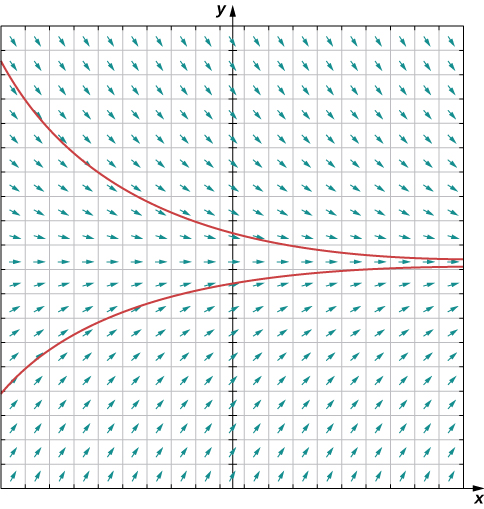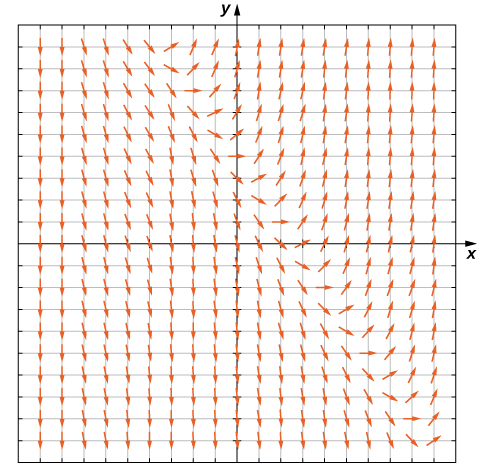| << Chapter < Page | Chapter >> Page > |
For the rest of this chapter we will focus on various methods for solving differential equations and analyzing the behavior of the solutions. In some cases it is possible to predict properties of a solution to a differential equation without knowing the actual solution. We will also study numerical methods for solving differential equations, which can be programmed by using various computer languages or even by using a spreadsheet program, such as Microsoft Excel.
Direction fields (also called slope fields) are useful for investigating first-order differential equations. In particular, we consider a first-order differential equation of the form
An applied example of this type of differential equation appears in Newton’s law of cooling, which we will solve explicitly later in this chapter. First, though, let us create a direction field for the differential equation
Here represents the temperature (in degrees Fahrenheit) of an object at time and the ambient temperature is [link] shows the direction field for this equation.

The idea behind a direction field is the fact that the derivative of a function evaluated at a given point is the slope of the tangent line to the graph of that function at the same point. Other examples of differential equations for which we can create a direction field include
To create a direction field, we start with the first equation: We let be any ordered pair, and we substitute these numbers into the right-hand side of the differential equation. For example, if we choose substituting into the right-hand side of the differential equation yields
This tells us that if a solution to the differential equation passes through the point then the slope of the solution at that point must equal To start creating the direction field, we put a short line segment at the point having slope We can do this for any point in the domain of the function which consists of all ordered pairs in Therefore any point in the Cartesian plane has a slope associated with it, assuming that a solution to the differential equation passes through that point. The direction field for the differential equation is shown in [link] .

We can generate a direction field of this type for any differential equation of the form
A direction field (slope field) is a mathematical object used to graphically represent solutions to a first-order differential equation. At each point in a direction field, a line segment appears whose slope is equal to the slope of a solution to the differential equation passing through that point.

Notification Switch
Would you like to follow the 'Calculus volume 2' conversation and receive update notifications?